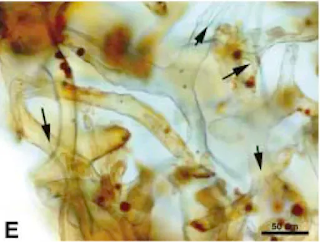A red blood cell must be relatively recent and contain C-14 in proportions similar to those in the living environment
A red blood cell (RBC) that has lost all of its carbon-14 (C-14) would be far too old to retain its red color. Here's why:
Key Points:
C-14 Decay and Timeframe:
- C-14 has a half-life of about 5,730 years. After about 50,000 to 60,000 years, C-14 levels drop to nearly undetectable amounts. If an RBC has lost all of its C-14, it would mean that it is tens of thousands of years old.
- C-14 has a half-life of about 5,730 years. After about 50,000 to 60,000 years, C-14 levels drop to nearly undetectable amounts. If an RBC has lost all of its C-14, it would mean that it is tens of thousands of years old.
Red Blood Cell Decomposition:
- Red blood cells are made of organic materials that degrade relatively quickly after death. In a living organism, RBCs are constantly replaced and maintained. Once the organism dies or the cells are isolated, they start breaking down rapidly.
- The red color of RBCs comes from hemoglobin, which degrades and loses its red color relatively quickly (within days to weeks) after cell death due to oxidation and other biochemical changes.
Preservation and Color Retention:
- To retain its red color, a blood cell would need to be extremely well-preserved, typically through special conditions such as freezing, rapid desiccation, or encapsulation in a way that prevents oxidation and degradation. Rapid burial under mud layers explains this kind of encapsulation. These observations give support to the Biblical flood.
Conclusion:
A blood cell that has lost all its C-14 (indicating an age of over 50,000 years) would not still be red. The organic components would have long since broken down, and the red color would have faded. If a blood cell is still visibly red, it must be relatively recent and contain C-14 in proportions similar to those in the living environment. If the samples contain a C14 isotope, then they can't be millions of years old.




